A plank of length 20m and mass 1kg is kept on a horizontal smooth surface. A cylinder of mass 1lg is kept near one end of the plank. The coefficient of friction between the two surface is 0.5. The plank is suddenly given a velocity 20m/s towards left
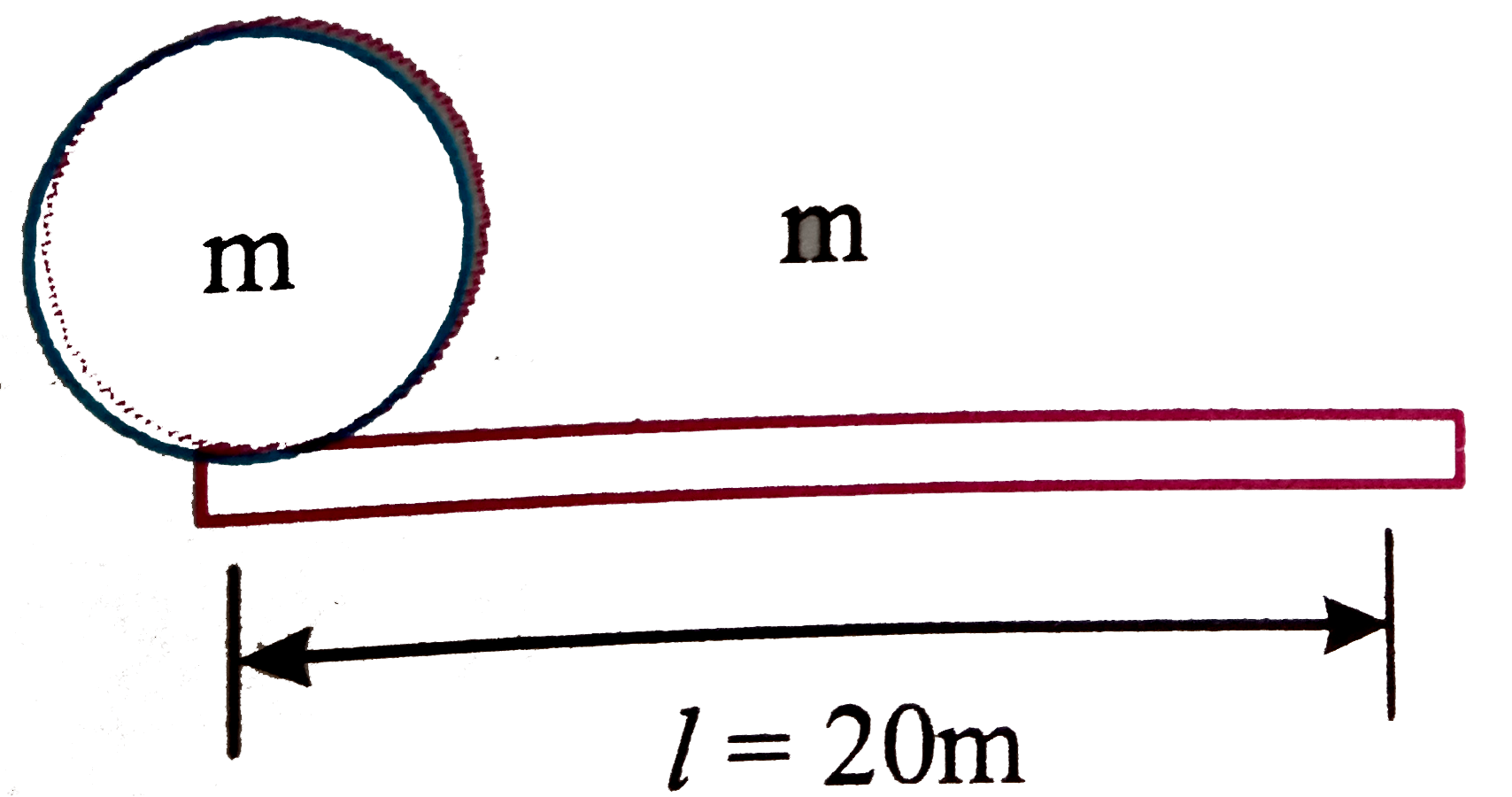
Which of the following statements is correct?
10m/s
1.5sec
20m/s
25m/s
The correct Answer is:B
fR=MR22α,f=5N,M=1kg,
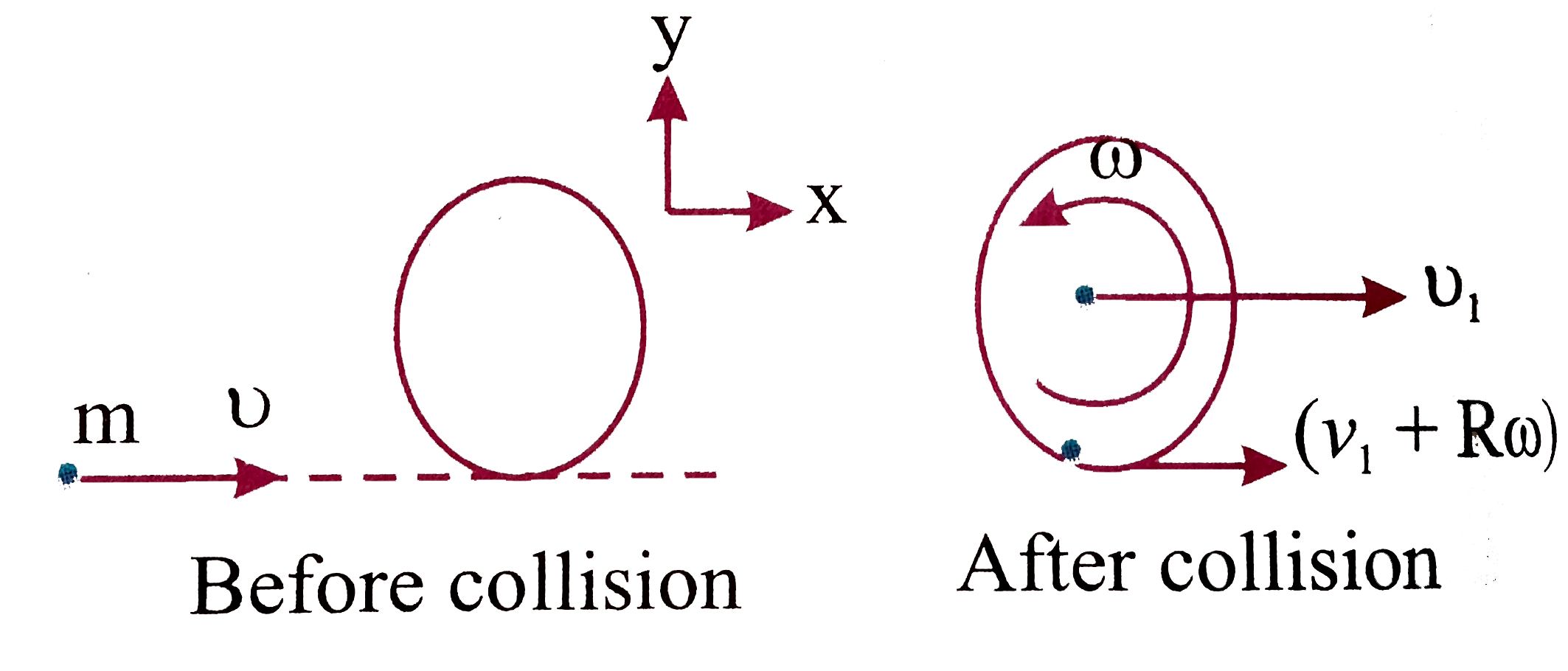
Rα=10m/s2,a1=fM=5m/s2,a2=5m/s2,
For acontact=a1,vcontanct=(a1+Rα)t=15t.....(1)
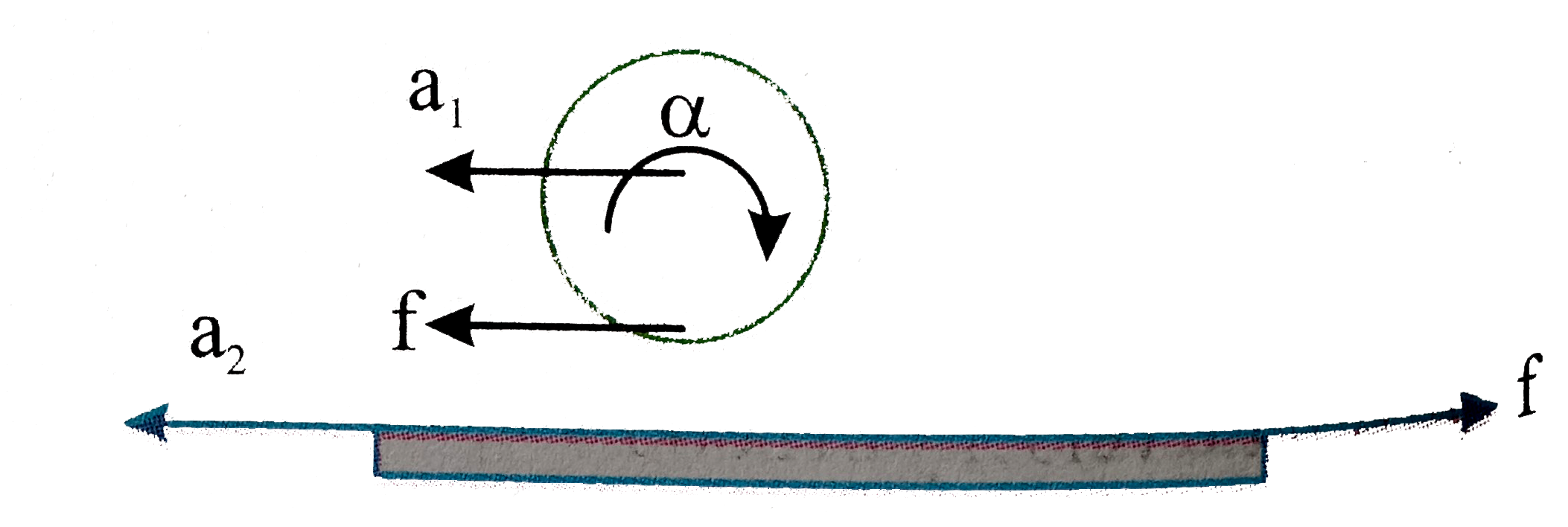
From eqns. (1) and (2)we get
t=1sec
Till the cylinder sllips on plank
Srel=urel+12arelt2,20×1−12×10×12=15m
Velocity of plank when pure rolling begins
v=20−5t=15m/s
Velocity of cylinder a1t=5m/s
When pure rolling begins, friction force vanishes, velocity of plank and cylinder is constants. after pure rolling beings.
Topper's Solved these Questions
- SYSTEM OF PARTICLESBOOK - NARAYNACHAPTER - SYSTEM OF PARTICLESEXERCISE - Level-VI
78 Videos
- SYSTEM OF PARTICLESBOOK - NARAYNACHAPTER - SYSTEM OF PARTICLESEXERCISE - Level -II(H.W)
47 Videos
- PHYSICAL WORLDBOOK - NARAYNACHAPTER - PHYSICAL WORLDEXERCISE - C.U.Q
10 Videos
- SYSTEM OF PARTICLES AND ROTATIONAL MOTION BOOK - NARAYNACHAPTER - SYSTEM OF PARTICLES AND ROTATIONAL MOTION EXERCISE - EXERCISE - IV
39 Videos
Similar Questions
A solid cylinder is kept on one edge of a plank of same mass and length 25 m placed on a smooth surface as shown in the figure. The coefficient of friction between the cylinder and the plank is 0.5. The plank is given a velocity of 20ms−1 towards right. Find the time (in S) after which plank any cylinder will separate. [g=10ms−2]
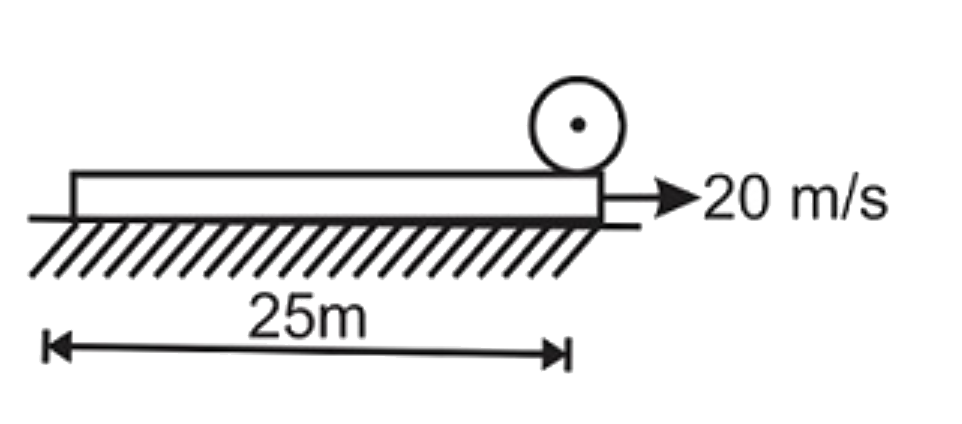
View SolutionA plank of mass m rests symmetrically on two wedges B and C of mass M. What is the acceleration of the plank? Neglect friction between all the contact surfaces.
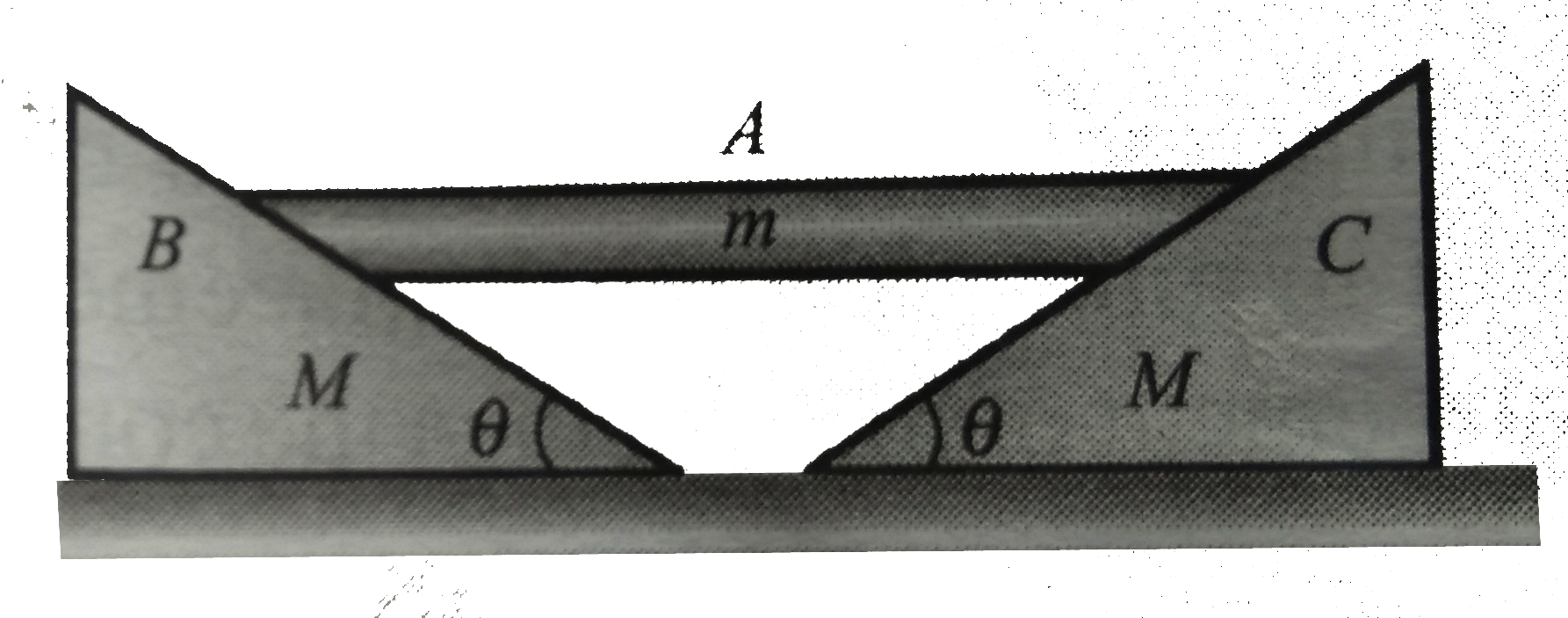
View Solution
Knowledge Check
A plank of length 20m and mass 1kg is kept on a horizontal smooth surface. A cylinder of mass 1lg is kept near one end of the plank. The coefficient of friction between the two surface is 0.5. The plank is suddenly given a velocity 20m/s towards left
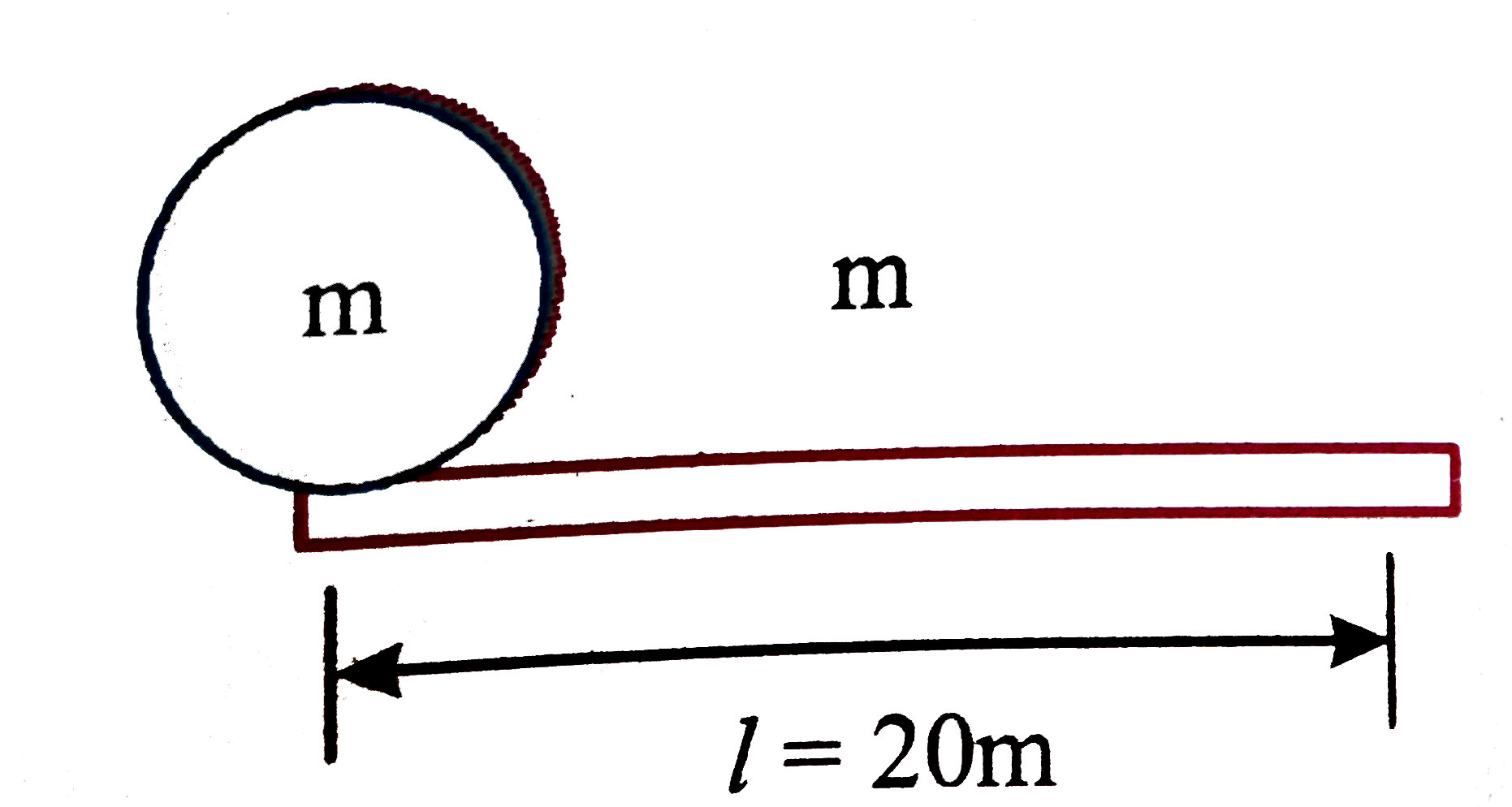
Time in which plank and cylinder separateA1secB1.5secC2.5secD2secA plank of length 20m and mass 1kg is kept on a horizontal smooth surface. A cylinder of mass 1lg is kept near one end of the plank. The coefficient of friction between the two surface is 0.5. The plank is suddenly given a velocity 20m/s towards left

Which of the following statements is correct?A10m/sB1.5secC20m/sD25m/sA block A of mass m is over a plank B of mass 2m. Plank B si placed over a smooth horizontal surface. The coefficient of friction between A and B is 12. Blocks A is given a velocity V0 towards right. Then
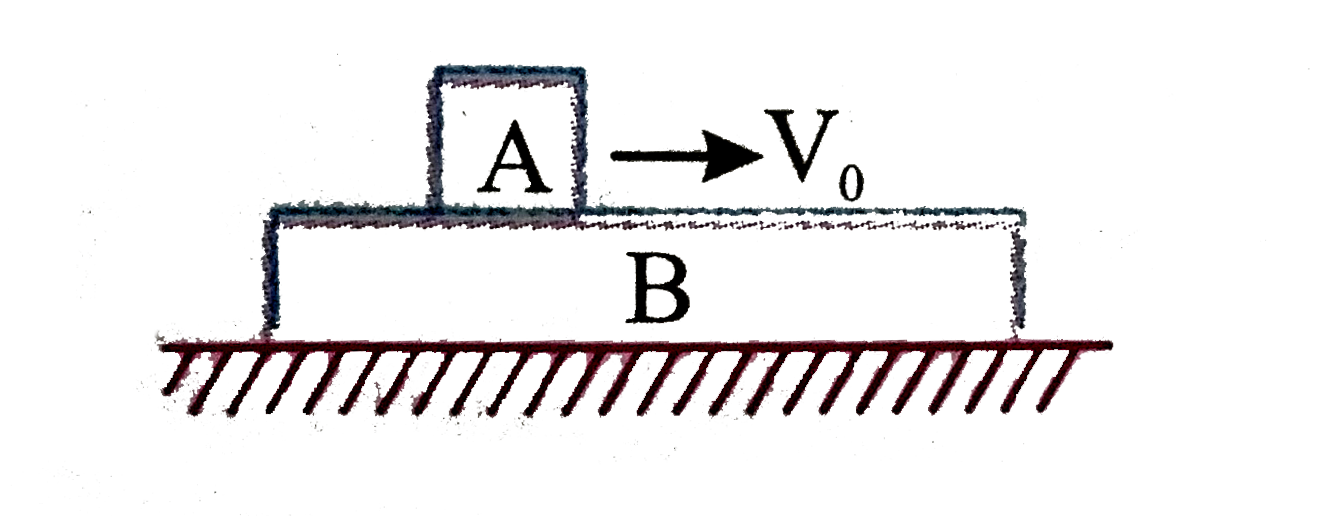 AAcceleration of A is g2BAcceleration of A is gCAcceleration of B relative to A is 34gDAcceleration of A is zero
AAcceleration of A is g2BAcceleration of A is gCAcceleration of B relative to A is 34gDAcceleration of A is zero
A plank of mass 5 kg in kept on a smooth surface. A block of 1 kg is kept on it and is given a velcoity of 12 m/s. There is friction between the block and the plank. Assuming the plank to be very long, find the magnitude of work done (in Joules) by friction on block till the relative sliding between them stops.

View SolutionA plank of mass 2kg and length 1m is placed on horizontal floor.A small block of mass 1kg is placed on top of the plank , at its right extreme end .The coefficient of friction between plank and floor is 0.5 and that between plank and block is 0.2 . If a horizontal force =30N starts acting on the plank to the right ,the time after which the block will fall off the plank is (g=10ms−2)
View SolutionBlock m1 is projected on a long plank of mass m2 plank is placed on a smooth horizontal surface. There is friction between block and plank, coefficient of friction is mu. Block m1 has initial velocity v01 and plank has initial velocity v02 with (v01>v02). Which of following graphs is correct.

View SolutionTwo balls A & B of mass m1 and m2 are kept on a horizontal smooth surface. A is given a velocity towards B so that they perform head on collision
View SolutionA block A of mass m is placed over a plank B of mass 2m. Plank B is placed over a smooth horizontal surface. The coefficient of friction between A and B is 12 block A is given a velocity v0 towards right. Accelration of B relative to A is
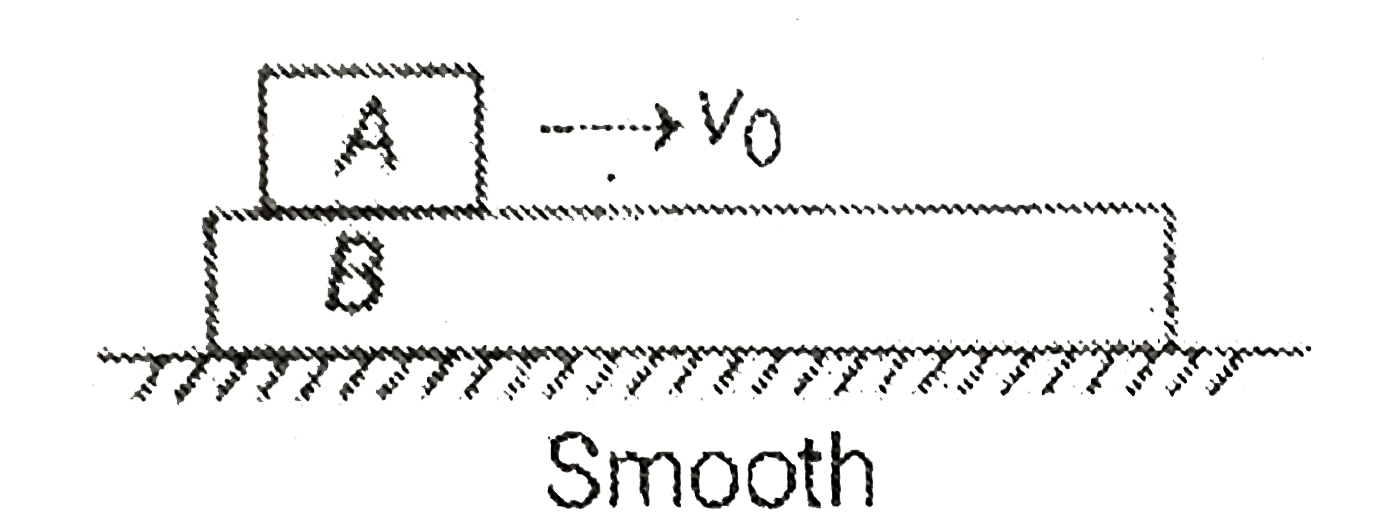
View Solution
